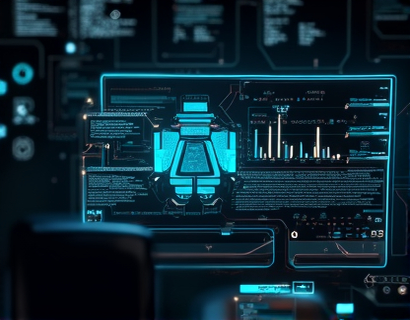Maximizing Medical Practice Efficiency with Advanced Software Solutions for Healthcare Management
In the rapidly evolving landscape of healthcare, medical practices face increasing challenges in maintaining efficiency and delivering high-quality patient care. The integration of advanced software solutions tailored for healthcare professionals plays a pivotal role in addressing these challenges. These solutions are designed to streamline administrative tasks, enhance patient care, and boost operational performance, ultimately allowing providers to focus on delivering exceptional medical services. This article delves into the various ways in which technology can transform the day-to-day operations of a medical practice, making it more efficient and effective.
Streamlining Administrative Tasks
One of the most significant benefits of advanced software solutions in healthcare is the automation and streamlining of administrative tasks. Traditional paper-based systems are not only time-consuming but also prone to errors and inefficiencies. By adopting digital solutions, medical practices can automate routine tasks such as appointment scheduling, patient registration, and billing. This automation reduces the workload on staff, minimizes human errors, and ensures that patient data is accurately and promptly recorded.
For instance, electronic health records (EHR) systems allow healthcare providers to manage patient information efficiently. EHRs centralize patient data, making it easily accessible to authorized personnel across different departments. This not only improves the accuracy of patient records but also enhances the coordination of care. Providers can quickly access a patient's medical history, test results, and treatment plans, leading to more informed decision-making and better patient outcomes.
Enhancing Patient Care
Advanced software solutions are not just about administrative efficiency; they also play a crucial role in enhancing patient care. By leveraging technology, healthcare providers can offer more personalized and responsive care. Patient portal platforms, for example, enable patients to manage their health proactively. Patients can view their medical records, schedule appointments, send messages to their healthcare providers, and access educational resources all from one secure online platform.
Telemedicine is another transformative technology that has gained significant traction, especially in recent years. Telemedicine allows healthcare providers to conduct consultations and monitor patients remotely, reducing the need for in-person visits and making healthcare more accessible, particularly for those in remote or underserved areas. This not only improves patient satisfaction but also helps in managing patient loads more effectively.
Boosting Operational Performance
Operational efficiency is critical for the success of any medical practice. Advanced software solutions can significantly enhance the operational performance of healthcare organizations by optimizing resource allocation, reducing costs, and improving workflow. Practice management software, for example, provides comprehensive tools for managing appointments, staff scheduling, and inventory control. These tools help practices run smoothly by ensuring that resources are used efficiently and that operations are well-coordinated.
Data analytics is another powerful feature of modern healthcare software. By analyzing large volumes of data, healthcare providers can gain valuable insights into practice performance, patient trends, and operational bottlenecks. These insights can inform strategic decisions, such as identifying areas for cost reduction, optimizing staff schedules, and improving patient flow. Data-driven decision-making is essential for maintaining a competitive edge in the healthcare industry.
Interoperability and Integration
Interoperability is a key factor in the success of advanced healthcare software solutions. Interoperable systems can communicate and exchange data seamlessly with other healthcare systems and devices, ensuring a cohesive and integrated approach to patient care. This is particularly important in multidisciplinary settings where different specialists and departments need to collaborate effectively.
Integration with third-party applications and services further enhances the functionality of healthcare software. For example, integrating with lab systems, pharmacy management tools, and insurance providers can streamline workflows and reduce manual data entry. This integration not only saves time but also reduces the risk of errors, leading to more accurate and efficient operations.
Security and Compliance
With the increasing digitization of healthcare, ensuring the security and privacy of patient data is paramount. Advanced software solutions are designed with robust security measures to protect sensitive information from unauthorized access and breaches. Compliance with regulations such as the Health Insurance Portability and Accountability Act (HIPAA) is a critical aspect of these solutions, ensuring that practices meet legal requirements and maintain patient trust.
Regular software updates and security audits are essential to maintaining a high level of protection. Healthcare providers should choose software solutions that prioritize security and offer ongoing support to address emerging threats and compliance changes.
User-Friendly Interfaces
For advanced software solutions to be effective, they must be user-friendly and intuitive. Healthcare providers and their staff are often busy and may not have the time to undergo extensive training. Software that is easy to navigate and use ensures that staff can adopt new technologies quickly and efficiently, maximizing the benefits without significant disruptions to daily operations.
Training and support are crucial components of any software implementation. Providers should look for solutions that offer comprehensive training resources, including tutorials, webinars, and dedicated support teams. This ensures that staff can fully leverage the software's capabilities and address any issues that arise.
Cost-Effectiveness
While the initial investment in advanced software solutions can be significant, the long-term benefits often outweigh the costs. By automating tasks, reducing errors, and improving operational efficiency, healthcare practices can achieve substantial cost savings over time. Additionally, the ability to manage patient loads more effectively and reduce no-shows can lead to increased revenue.
It's important for healthcare providers to conduct a thorough cost-benefit analysis before implementing new software. This includes considering not only the upfront costs but also the ongoing expenses such as maintenance, updates, and training. Choosing a solution that offers a clear return on investment is crucial for the financial sustainability of the practice.
Future Trends in Healthcare Software
The healthcare technology landscape is continually evolving, with new innovations on the horizon. Artificial intelligence (AI) and machine learning are emerging as powerful tools in healthcare software, offering the potential to revolutionize how practices operate. AI can assist in diagnostic processes, predict patient outcomes, and personalize treatment plans based on vast amounts of data.
Another trend is the use of blockchain technology for secure and transparent data management. Blockchain can enhance data integrity and security, providing a tamper-proof record of patient information and transactions. This can be particularly beneficial in ensuring the accuracy and reliability of medical records.
As technology continues to advance, healthcare software solutions will become even more sophisticated, offering even greater benefits to medical practices. Staying informed about these trends and being open to adopting new technologies will be essential for healthcare providers looking to stay ahead in the industry.
In conclusion, advanced software solutions are indispensable tools for modern medical practices. By streamlining administrative tasks, enhancing patient care, and boosting operational performance, these solutions enable healthcare providers to focus on what they do best—delivering exceptional medical services. The integration of technology not only improves efficiency and accuracy but also enhances the overall patient experience, leading to better health outcomes and higher satisfaction rates.











































